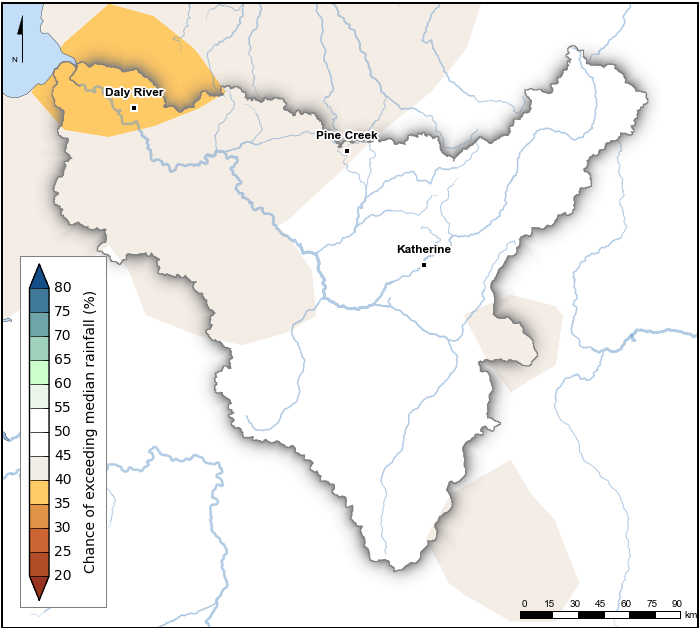Daly: Outlook for 2022 Account
as at 1 December 2021
- Rainfall is likely to be average during the 2021–22 wet season.
- Inflows into the region's aquifer storages are expected to be lower than last year.

For further information on the outlook for the region during the 2021–22 year scroll down this page or click on the links below:
Current water levels
- Little rainfall has fallen across the region during July–November 2021, which is typical for this time of the year. Groundwater levels have continued to steadily decrease during this 5-month period.
- More information on current groundwater levels in the region is available on the Bureau of Meteorology's Groundwater Explorer website.
Climate outlook

Figure S8 Chance of exceeding median rainfall for December
2021–February 2022
- The next few months (December–February) are usually when about two thirds of the region's annual rainfall occurs. According to the Bureau of Meteorology's climate outlook (25 November 2021), rainfall is expected to be average during this period.
- The El Niño–Southern Oscillation (ENSO) is currently in a La Niña phase. But this La Niña is likely to be short-lived, persisting only until the late summer or early autumn 2022.
- Inflows into the region's aquifer storages for the 2021–22 year are expected to be average and less than the previous year.
Future commitments
- Water use is expected to be higher than 2020–21, primarily due to the likely average rainfall conditions.









